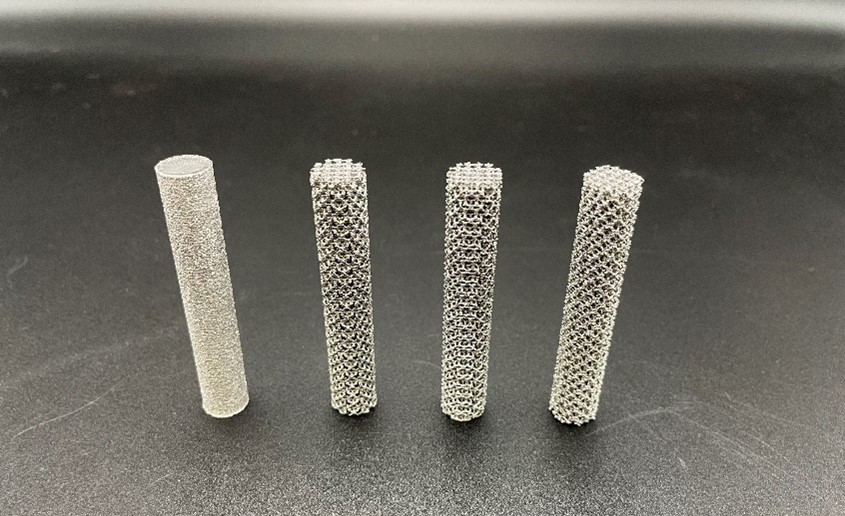Tech Briefs
Savannah River National Laboratory
Ultra-High Temperature, 3D Printable Thermochemical Energy Storage
Technology Overview
Savannah River National Laboratory has developed an ultra-high temperature thermochemical energy storage material based on metal hydride technology. The material can operate at temperatures ranging from 750-950 °C and store thermal energy through a reaction with hydrogen. This material can be 3D printed under ambient conditions for low-cost design of complex geometries that are easily incorporated into high temperature heat exchangers.

Photograph of 3D printed thermochemical energy storage material with different lattice structures.
Benefits
- Ultra-high operational temperatures for advanced, high-efficiency thermal-to-electric power conversion units
- Material components can be produced by advanced manufacturing for rapid prototyping and thermal energy storage module integration
- Thermal energy storage densities are higher than latent and sensible heat materials
- Provides ultra-long duration thermal energy storage
Applications and Industries
- Thermal energy storage for concentrated solar power
- Thermal energy storage for hybrid energy systems
- Thermal energy storage for long duration grid storage solutions
Description
This technology addresses the need for high temperature thermal energy storage for high efficiency power conversion units such as the Stirling engine. Additionally, storing energy thermochemically enables long duration energy storage for days, weeks, or even seasons. This thermal energy storage material can be 3D printed to provide cost-effective production of complex parts, provide direct thermal contact integration with heat exchanger surfaces, and introduce porosity for increased rates of thermal energy storage and delivery.
Intellectual Property
- Ward, P.; Murph, S.; Sessions, H. High Enthalpy Thermochemical Energy Storage Materials. Filed: October 5th, 2022, US 17/960,520
- Laboratory testing development stage (Technical Readiness Level = 3)
- Licensing opportunities available soon
Partnering Opportunities
SRNL invites interested companies with proven capabilities in this area of expertise to develop commercial applications for this process under a cooperative research and development agreement (CRADA) or licensing agreement. Interested companies will be requested to submit a business plan setting forth company qualifications, strategies, activities, and milestones for commercializing this invention. Qualifications should include past experience at bringing similar products to market, reason-able schedule for product launch, sufficient manufacturing capacity, established distribution networks, and evidence of sufficient financial resources for product development and launch.
Download Tech Brief
Contact Information
Savannah River National Laboratory
E-mail: partnerships@srnl.doe.gov